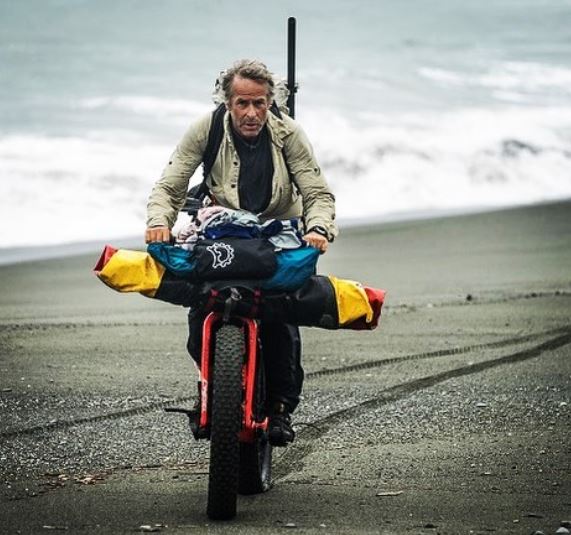Blog
stories • happenings • adventures
Misery Loves Company – Part 3
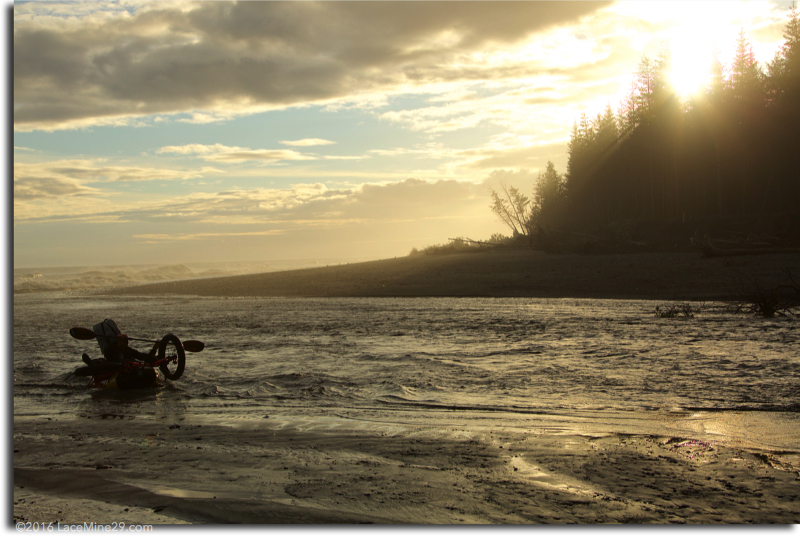
Our best day started really bad. It started with rain all night and the night before, us soaked from three hours in a temperate rain forest – both its old growth form and its scabby, hellish clear-cut 10-year old regrowth form – followed by a chilly crossing of a misty glacial stream called the White River.
“Oh man! I forgot my pearl snap shirt at camp!” complained Jebs, just as we were all about to ride off in the rain to warm up. He paddled back across while I watched a thumb-sized Winter Wren forage for bugs on a five foot diameter silver stump.
We headed off on a steep beach with a rising tide chasing us like sandpipers higher up the strand line. Steep beaches are loose beaches generally, and the going was not so good. The head-wind was there and the rain, and the taunting words on Andrew Skurka’s annotated maps we carried noting how nice it had been for him to get off the slanted beach and onto the gravel road.
I’d given up on the road. Largely because I’d led two fruitless searches the day before. That day had been the worst day. I started really good with fine riding, a shipwreck out of Planet of the Apes meets Mad Max, food frenzy at Yakataga’s conex, and even four miles of road. The fruitless search for Skurka’s road netted us many miles but no forward progress as well as Devil’s club spines in our knuckles.
Most impressive to me that day was Brat’s fine Class IV bushwacking lead along rain-soaked mossy logs perched high off an invisible forest floor. After picking around vertical branches he log-walked out to a broken base 20 feet above a creek bed, stepped across the yawning gap to a shattered stump (a 5.4 move I swear, but horribly exposed), down-climbed, stepped across another gap to yet another stump and then worked his way to an wall of impenetrable brambles of sweet juicy fruit.
That was some sort of weird mix of the best and the worst of the worst day.
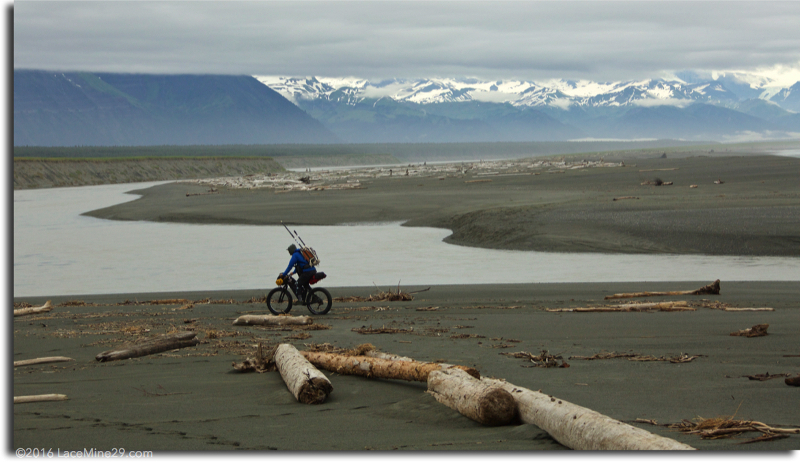
But the on best day that started bad, Brat and Jebs studied Brat’s iPhone GPS and the vegetation visible along the beach, hoping for respite from head-winds and heavy rain.
We found no road that morning. That afternoon, turned back by a high tide consuming the coast that once held Guyot Bay and Icy Cape, with Big River’s live trees floating downstream into crashing surf, we waited. Out of the wind in the lee of a forest buried in sand, the sun came out, we dried around a fire, ate ad libitum and even napped until low tide.
At low tide we crossed the Big River, the sprinted around the eroding mud cliffs. On the beach beyond we picked up an ATV trail and then six miles of road to an Icy Bay beach where we camped at a 100 foot waterfall with high hopes for the next day’s crossing.
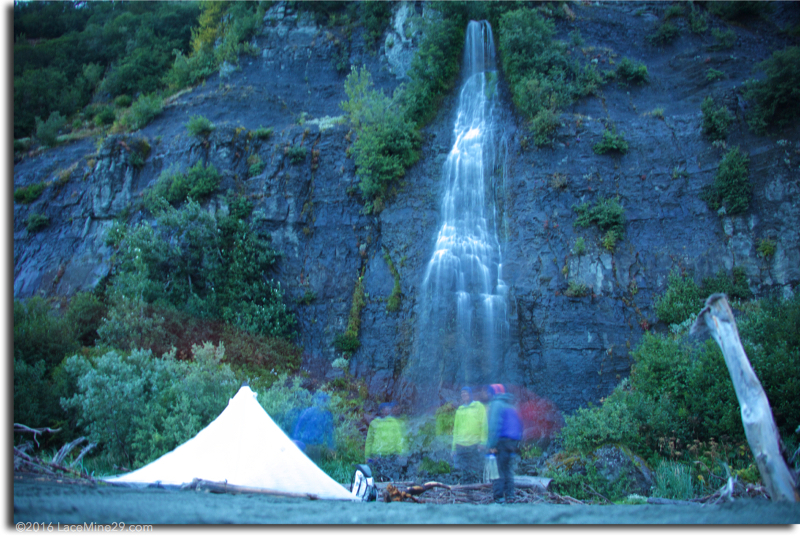
We hoped that the rise in air pressure would continue, but it didn’t. The sucker holes were swallowed up in gray clouds, then rain fell, winds blew and our camp at the moraine of the Malaspina Glacier, would be our last wild camp – this year.
“Yea dudes,” said Doom, “We’ll be back next year to complete our Lost Coast by traversing the Malaspina section and riding that bad boy with our wheels on ice.”
So once again we’ll visit Yakutat, a town that left us with this memory:
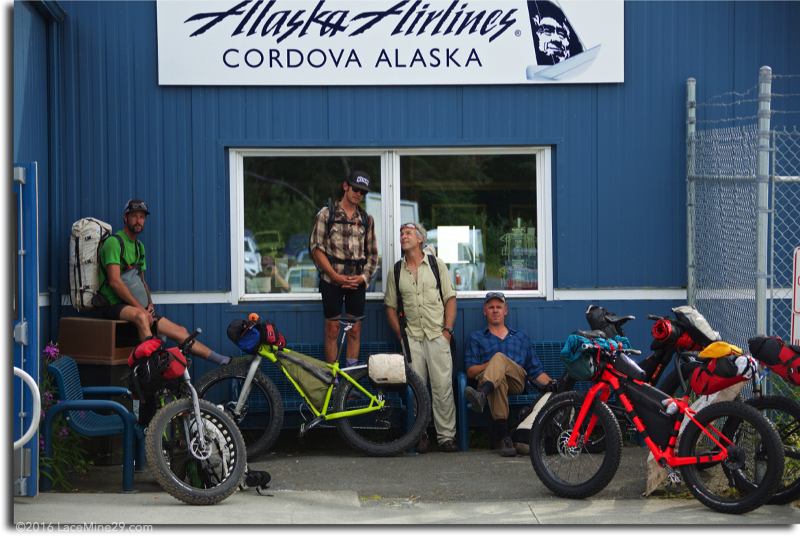
“I’m not letting you guys on the plane until you take showers.”
The Alaska Airlines employee was so serious that he went to town, bought us towels and toiletry kits, used his employee card to open up the employee showers, even gave us detergent to wash our clothes.
That’s saying something in a remote, soggy bush-town known for fishermen and loggers.
But I have to say, I was a pretty stinky blend of old man funk, boating cat-piss, bike BO, and bad farts from freeze-dried food, soaked in five days of rain and fermented in a one-piece dry-suit.
“Thanks,” I said, “I really appreciate the opportunity. I wish Alaska Airlines supplied me with a post-trip shower after every trip.”
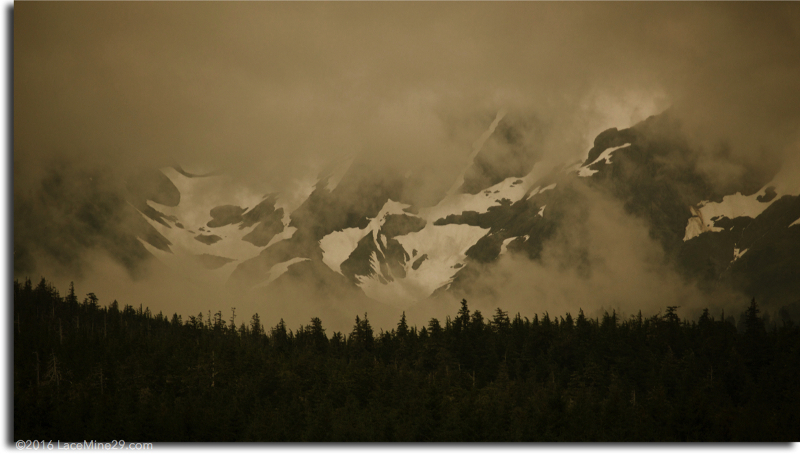
Photos by Mike Curiak, more excellent photos available on his adventure journal.
If you’re just joining, make sure to read Part 1 and Part 2.
Roman Dial has been packrafting for three decades, from first descents of steep creeks to multi-week traverses of wilderness areas in North and South America, Asia and Australia. Dial is a professor of Environmental Science and Mathematics at Alaska Pacific University, where he teaches packrafting courses.

